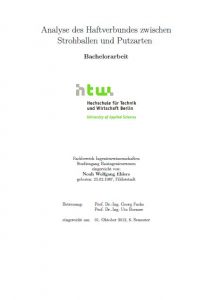In the last quarter of the century, the consciousness of many people has been related to the environment. Themes such as climate change became also increasingly important in politics. In Germany, almost 40% of the energy is spent on the construction and maintenance of buildings. More and more recent laws are designed to reduce this share. 40% of the total waste comes from the construction sector. Compared to 875 kg household and commercial waste per person, 3500 kg of building waste per inhabitant of BRD per year.A contribution to the reduction of energy consumption in the building and building sector could lie in straw bale building. From the by-product of grain cultivation load bearing walls can be produced. Also wood trusses can be in-filled with straw bales.In 2009, the German Institute for Structural Engineering (DIBt) approved a general building inspectorate approval for a thermal insulation material from “construction straw bales”.However, this applies only to non-load bearing constructions and only under compliance with this approval. Further general approvals are in preparation.Other countries such as the United States, Austria, France andSwitzerland are also about to adopt uniform rules for the construction with straw bales. The advantages compared to other designs are the lowEnergy expenditure for the production and the mostly regional availability of the commodity. Other advantages of straw bale construction would be listed as follows:
– Toxic harmlessness- Biodegradability
– Lower price
– Promotion of the regional economy
– Load bearing constructions with static function possible
– Easy handling (possibility of self-assembly)
– Low thermal conductivity (passive house standard)
At the moment the Fachverband Strohballenbau Deutschland e.V. (FASBA) is preparing general rules for building with straw bales. Unfortunately, there is still considerable clarification and research needed. The advantages mentioned are also still researched. A remaining research gap is, among others, the bonding of different plasters on straw bales. These research gaps will get closed by research based on practical lab tests within the scope of this Bachelor thesis.The procedure is following: At the beginning the task becomesdescribed. Subsequently, the building materials properties are described.The experiments are divided into two sections. In the first partExplains how the test specimens are produced. In the second, the experiments are carried out for determining the strength of the test specimens. This is followed by the compilation of all attempts, an evaluation and the final assessment.
Author: Noah Wolfgang Ehlers, bachelor thesis on University of Applied Science, Berlin
Date: 01. October 2012






